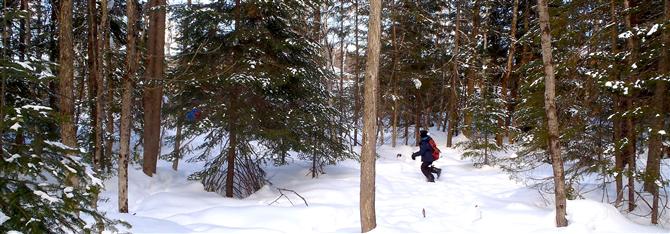
Predator and Prey
Overall Goal
Through a deep discussion about biodiversity and then playing the role of a herbivore, carnivore or omnivore in a forest habitat, students will gain a better understanding of the importance of biodiversity and how humans can be impactful in a positive or negative way.
Grade 6 Curriculum Connections
Science and technology - Understanding life systems - Biodiversity
- assess human impacts on biodiversity, and identify ways of preserving biodiversity
- investigate the characteristics of living things, and classify diverse organisms according to specific characteristic
- demonstrate an understanding of biodiversity, its contributions to the stability of natural systems, and it benefits to humans
- Connect to STEM and Big Ideas (Fairness & Equity, Systems, Community, Diversity, Interdependence, Ability to Make a Difference, Equilibrium)
Program Description
The predator and prey relationship is an essential part of any ecosystem. Life in our forest ecosystem is diverse and each organism is linked to others in a web of connections. Each organism and its connections in the web are essential to maintaining a balance in our ecosystem. Without that balance the ecosystem would shift and change, potentially collapsing with disastrous consequences. In this program we simulate the forest ecosystem, here at SOES, and the connections between its organisms.An inquiry based introduction and discussion leads to student's understanding of the concepts of biodiversity and the essential parts of a healthy ecosystem. Your students will then take on the role of a mammal trying to survive in our forest habitat. Some will be predators and others prey. They will have to look for food, water and shelter plus evade predators, hunters or disease in order to survive. The game involves a lot of physical activity as students run around in our large (but bounded) forest play area.During the debrief students will be asked to explore their experience role-playing their specific animal, consider what factors impacted their survival and what challenges real animals face. Emphasis will be placed on the interconnectedness of everything within our ecosystem and how human interference can have a big impact.
Success Criteria/Learning Goals
1. Identify 3 different groups of mammals and give one specific characteristic of each.
2. Explain what an ecosystem is and how things are connected to one another.
3. Define biodiversity and explain it’s importance.
4. Demonstrate an understanding of how humans impact forest ecosystems.
Pre-Trip Activity
Stream Salmon Forest: Nature of Things video from "Curio" (56 mins)
Next Step Environmental Action
Students can take a personal quiz to determine their ecological footprint and how much land it takes to support their lifestyle. The results from this quiz can help students focus on ways in which they can change their impact on the earth and small ways they can reduce their resource consumption and make a difference.
Resources
Salmon Forest (this link will bring you to the TDSB Virtual Library to check for book availability at all TDSB schools)by David Suzuki (Author), Sarah Ellis (Author), Sheena Lott (Author)An excellent introduction to biodiversity and the importance of every living thing within our natural world. This book goes further than Wolf Island making a stronger connection between the forest and the animals. It also connects nicely to humans and our food.
For more resources please see Learning Resources on our website under Biodiversity.
This activity can be done in any season and almost any weather